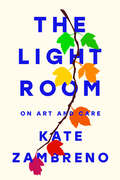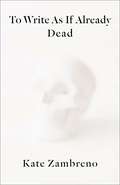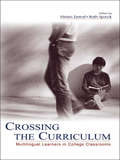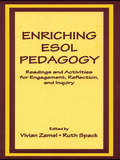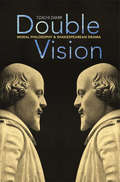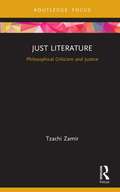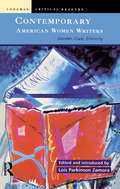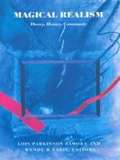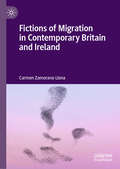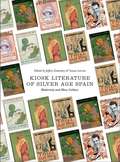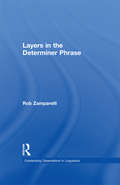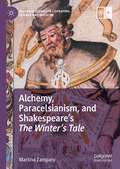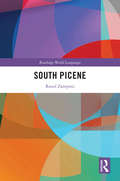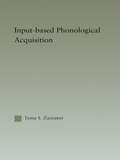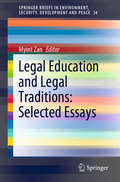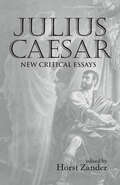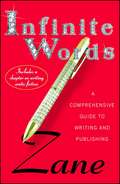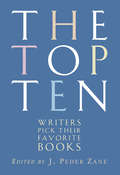- Table View
- List View
The Light Room
by Kate Zambreno&“Kate Zambreno has invented a new form. It is a kind of absolute present, real life captured in closeup.&“ —Annie Ernaux, winner of the Nobel Prize in Literature From &“one of our most formally ambitious writers&” (Esquire), a moving account of caretaking in a time of uncertainty and lossIn The Light Room, Zambreno offers her most profound and affecting work yet: a candid chronicle of life as a mother of two young daughters in a moment of profound uncertainty about public health, climate change, and the future we can expect for our children. Moving through the seasons, returning often to parks and green spaces, Zambreno captures the isolation and exhaustion of being home with a baby and a small child, but also small and transcendent moments of beauty and joy. Inspired by writers and artists ranging from Natalia Ginzburg to Joseph Cornell, Yūko Tsushima to Bernadette Mayer, Etel Adnan to David Wojnarowicz, The Light Room represents an impassioned appreciation of community and the commons, and an ecstatic engagement with the living world.How will our memories, and our children&’s, be affected by this time of profound disconnection? What does it mean to bring new life, and new work, into this moment of precarity and crisis? In The Light Room, Kate Zambreno offers a vision of how to live in ways that move away from disenchantment, and toward light and possibility.
To Write as if Already Dead (Rereadings)
by Kate ZambrenoTo Write As If Already Dead circles around Kate Zambreno’s failed attempts to write a study of Hervé Guibert’s To the Friend Who Did Not Save My Life. In this diaristic, transgressive work, the first in a cycle written in the years preceding his death, Guibert documents with speed and intensity his diagnosis and disintegration from AIDS and elegizes a character based on Michel Foucault.The first half of To Write As If Already Dead is a novella in the mode of a detective story, searching after the mysterious disappearance of an online friendship after an intense dialogue on anonymity, names, language, and connection. The second half, a notebook documenting the doubled history of two bodies amid another historical plague, continues the meditation on friendship, solitude, time, mortality, precarity, art, and literature.Throughout this rigorous, mischievous, thrilling not-quite study, Guibert lingers as a ghost companion. Zambreno, who has been pushing the boundaries of literary form for a decade, investigates his methods by adopting them, offering a keen sense of the energy and confessional force of Guibert’s work, an ode to his slippery, scarcely classifiable genre. The book asks, as Foucault once did, “What is an author?” Zambreno infuses this question with new urgency, exploring it through the anxieties of the internet age, the ethics of friendship, and “the facts of the body”: illness, pregnancy, and death.
Crossing the Curriculum: Multilingual Learners in College Classrooms
by Vivian Zamel Ruth SpackAs college classrooms have become more linguistically diverse, the work of ESOL professionals has expanded to include research on the experiences of multilingual learners not only in ESOL courses but also in courses across the curriculum. At the same time that ESOL professionals are trying to understand the academic challenges that learners face beyond ESOL courses, faculty across the disciplines are trying to meet the challenge of teaching students of differing linguistic backgrounds. Crossing the Curriculum: Multilingual Learners in College Classrooms responds to these issues and concerns by capturing the complex and content-specific nature of students' and teachers' experiences and providing a nuanced understanding of how multilingual students' learning can be fostered and sustained. Crossing the Curriculum: Multilingual Learners in College Classrooms is unique in bringing together the perspectives of researchers, students, and teachers. These multiple lenses allow for a richly layered picture of how students and teachers actually experience college classrooms. Common themes and pedagogical principles resonate across the three distinct sections of the book:*Part One, "Investigating Students' Experiences Across the Curriculum: Through the Eyes of Classroom Researchers," consists of chapters written by ESOL and composition researchers who have investigated multilingual students' experiences in undergraduate courses across the curriculum.*Part Two, "Learning Across the Curriculum: Through Students' Eyes," consists of chapters written by two multilingual learners who chronicled their experiences as they crossed the curriculum over time.*Part Three, "Engaging Students in Learning: Through the Eyes of Faculty Across the Curriculum," consists of chapters written by faculty from several academic fields--Anthropology, Philosophy, Nursing, Literature, Sociology, and Asian American Studies--who discuss their own attempts to address the needs of multilingual learners in their classrooms.
Enriching Esol Pedagogy: Readings and Activities for Engagement, Reflection, and Inquiry
by Vivian Zamel Ruth SpackEnriching ESOL Pedagogy: Readings and Activities for Engagement, Reflection, and Inquiry is a collection of thought-provoking articles and activities designed to engage practicing and prospective ESOL teachers in an ongoing process of reflecting on, critically examining, and investigating theory and practice. Its twofold purpose is to provide a theoretical perspective and to offer ways for making the teaching of English to speakers of other languages (ESOL) meaningful for both teachers and learners. Underlying the activities and the readings themselves is the assumption that teachers need to play a role in exploring, shaping, and theorizing the work they do. The readings included represent a range of genres. They are informed by a common philosophical perspective about language acquisition and treat language teaching and learning holistically. The book is organized into five integrated units that: * raise questions about conventional notions of methods; * take into account the complicated nature of real classrooms; * provide theoretical principles for teaching that promotes language acquisition; * include rich descriptions of actual classroom experiences; and * question assumptions about language and literacy. Each set of readings begin with a "Before Reading" section and is followed by "Reflecting on the Readings," "Reading for Further Reflection," and "Suggested Projects for Inquiry" sections. This volume is a valuable resource for practicing and prospective teachers in the field of TESOL who work with diverse student populations--at all levels--in both mainstream and ESL/bilingual settings.
The Cambridge Companion to W.E.B. Du Bois
by Shamoon ZamirW. E. B. Du Bois was the pre-eminent African American intellectual of the twentieth century. As a pioneering historian, sociologist and civil rights activist, and as a novelist and autobiographer, he made the problem of race central to an understanding of the United States within both national and transnational contexts; his masterwork The Souls of Black Folk (1903) is today among the most widely read and most often quoted works of American literature. This Companion presents ten specially commissioned essays by an international team of scholars which explore key aspects of Du Bois's work. The book offers students a critical introduction to Du Bois, as well as opening new pathways into the further study of his remarkable career. It will be of interest to all those working in African American studies, American literature, and American studies generally.
Double Vision: Moral Philosophy and Shakespearean Drama
by Tzachi ZamirHamlet tells Horatio that there are more things in heaven and earth than are dreamt of in his philosophy. In Double Vision, philosopher and literary critic Tzachi Zamir argues that there are more things in Hamlet than are dreamt of--or at least conceded--by most philosophers. Making an original and persuasive case for the philosophical value of literature, Zamir suggests that certain important philosophical insights can be gained only through literature. But such insights cannot be reached if literature is deployed merely as an aesthetic sugaring of a conceptual pill. Philosophical knowledge is not opposed to, but is consonant with, the literariness of literature. By focusing on the experience of reading literature as literature and not philosophy, Zamir sets a theoretical framework for a philosophically oriented literary criticism that will appeal both to philosophers and literary critics. Double Vision is concerned with the philosophical understanding induced by the aesthetic experience of literature. Literary works can function as credible philosophical arguments--not ones in which claims are conclusively demonstrated, but in which claims are made plausible. Such claims, Zamir argues, are embedded within an experiential structure that is itself a crucial dimension of knowing. Developing an account of literature's relation to knowledge, morality, and rhetoric, and advancing philosophical-literary readings of Richard III, Macbeth, Romeo and Juliet, Othello, Antony and Cleopatra, Hamlet, and King Lear, Zamir shows how his approach can open up familiar texts in surprising and rewarding ways.
Just Literature: Philosophical Criticism and Justice (New Literary Theory)
by Tzachi ZamirIn Just Literature, Tzachi Zamir introduces the idea of 'philosophical criticism' as an innovative approach to interpreting literary texts. Throughout the book, Zamir uses the theme of justice as a case study for this new critical approach. By using ‘philosophical criticism’, Zamir posits that a stronger grasp of the idea of justice can increase one’s understanding of literature, and thus its value. He offers philosophical readings of works by Dante, Shakespeare, Toni Morrison, J. M. Coetzee and Philip Roth to explore the relationship between aesthetic and epistemic value. Zamir argues that, while literature and philosophy remain separate entities, examining the two in tandem may help inform the study of both. Offering an inventive twist on an established dynamic, this book is essential reading for any student or scholar of literature or philosophy.
Contemporary American Women Writers: Gender, Class, Ethnicity (Longman Critical Readers)
by Lois Parkinson ZamoraThis collection brings together critical essays that examine questions of identity and community in the fiction of contemporary American women writers among them Alice Walker, Toni Morrison and Sandra Cisnernos. The essays consider how identities and societies are dramatized in particular works of fiction, and how these works reflect cultural communities outside the fictional frame - often the communities in which their authors live and work. The essays included here concern fictional representations of African American, Latino, Asian American, Native American, Anglo and Euro-American communities and their working interactions in the multicultural United States. Each critic asks, in his or her own way, how a particular writer transforms her social grounding into language and literature.The introduction includes an overview of the range of literary criticism devoted to contemporary American women writers, and an extensive bibliography of complementary critical readings is provided to encourage further study. Undergraduate and postgraduate students of contemporary literature will find the text an invaluable guide to contemporary women's writing in America, and the range of criticism that this has given rise to.
Magical Realism: Theory, History, Community
by Lois Parkinson Zamora Wendy B. FarisMagical realism is often regarded as a regional trend, restricted to the Latin American writers who popularized it as a literary form. In this critical anthology, the first of its kind, editors Lois Parkinson Zamora and Wendy B. Faris show magical realism to be an international movement with a wide-ranging history and a significant influence among the literatures of the world. In essays on texts by writers as diverse as Toni Morrison, Günter Grass, Salman Rushdie, Derek Walcott, Abe Kobo, Gabriel García Márquez, and many others, magical realism is examined as a worldwide phenomenon.Presenting the first English translation of Franz Roh's 1925 essay in which the term magical realism was coined, as well as Alejo Carpentier's classic 1949 essay that introduced the concept of lo real maravilloso to the Americas, this anthology begins by tracing the foundations of magical realism from its origins in the art world to its current literary contexts. It offers a broad range of critical perspectives and theoretical approaches to this movement, as well as intensive analyses of various cultural traditions and individual texts from Eastern Europe, Asia, North America, Africa, the Caribbean, and Australia, in addition to those from Latin America. In situating magical realism within the expanse of literary and cultural history, this collection describes a mode of writing that has been a catalyst in the development of new regional literatures and a revitalizing force for more established narrative traditions--writing particularly alive in postcolonial contexts and a major component of postmodernist fiction.
Fictions of Migration in Contemporary Britain and Ireland
by Carmen Zamorano LlenaThis book examines how the transcultural and transnational migration of people, texts, and ideas has transformed the paradigm of national literature, with Britain and Ireland as case studies. The study questions definitions of migration and migrant literature that focus solely on the work of authors with migrant backgrounds, and suggests that migration is not extraneous but intrinsic to contemporary understandings of national literature in a global context. The fictional work of authors such as Caryl Phillips, Colum McCann, Abdulrazak Gurnah, Rose Tremain, Elif Shafak, and Evelyn Conlon is analysed from a variety of perspectives, including transculturality, cosmopolitanism, and Afropolitanism, so as to emphasise how their work fosters an understanding of national literature, as well as of individual and collective identities, based on transborder interconnectivity.
Kiosk Literature of Silver Age Spain: Modernity And Mass Culture
by Jeffrey Zamostny Susan LarsonThe so-called “Silver Age” of Spain ran from 1898 to the rise of Franco in 1939 and was characterized by intense urbanization, widespread class struggle and mobility, and a boom in mass culture. This book offers a close look at one manifestation of that mass culture: weekly collections of short, often pocket-sized books sold in urban kiosks at low prices. These series published a wide range of literature in a variety of genres and formats, but their role as disseminators of erotic and anarchist fiction led them to be censored by the Franco dictatorship. This book offers the most detailed scholarly analysis of kiosk literature to date, examining the kiosk phenomenon through the lens of contemporary interdisciplinary theories of urban space, visuality, celebrity, gender and sexuality, and the digital humanities.
Layers in the Determiner Phrase (Outstanding Dissertations in Linguistics)
by Rob ZamparelliThe main topic of this work is the interaction between syntactic structure and meanin within the noun phrase, with data drwn primarily from English and Italian.
Alchemy, Paracelsianism, and Shakespeare’s The Winter’s Tale (Palgrave Studies in Literature, Science and Medicine)
by Martina ZamparoThis book explores the role of alchemy, Paracelsianism, and Hermetic philosophy in one of Shakespeare’s last plays, The Winter’s Tale. A perusal of the vast literary and iconographic repertory of Renaissance alchemy reveals that this late play is imbued with several topoi, myths, and emblematic symbols coming from coeval alchemical, Paracelsian, and Hermetic sources. It also discusses the alchemical significance of water and time in the play’s circular and regenerative pattern and the healing role of women. All the major symbols of alchemy are present in Shakespeare’s play: the intertwined serpents of the caduceus, the chemical wedding, the filius philosophorum, and the so-called rex chymicus. This book also provides an in-depth survey of late Renaissance alchemy, Paracelsian medicine, and Hermetic culture in the Elizabethan and Jacobean ages. Importantly, it contends that The Winter’s Tale, in symbolically retracing the healing pattern of the rota alchemica and in emphasising the Hermetic principles of unity and concord, glorifies King James’s conciliatory attitude.
South Picene (Routledge World Languages)
by Raoul ZamponiSouth Picene is the pre-Roman language spoken in the Adriatic sector of central Italy. This book presents a description of what we know about the structure of this language. South Picene is (together with Umbrian, Oscan, Latin, and Faliscan) one of the few members of the Italic branch of the Indo-European family and is also one of the European languages with the oldest existing texts (550 BCE). Besides a grammatical outline of the language, the book contains the linguistic (and often stylistic) analysis of all the 21 inscriptions that compose the South Picene epigraphic corpus and a word list. South Picene will be of interest to students and scholars of Indo-European languages, Italic languages, and in general, ancient languages of the Italian peninsula.
Input-based Phonological Acquisition (Outstanding Dissertations in Linguistics)
by Tania ZamunerThis book provides an analysis of two theories of language acquisition: the theory that acquisition is primarily mediated by innate properties of language provided by universal grammar, and the opposing theory that language is acquired based on the patterns in the ambient language. A problem not often considered is that these two theories are confounded because the structures that are frequent across languages are also typically the most frequent within a specific language. In addition, the innate theory of language acquisition is difficult to quantify and qualify. Using cross-linguistic, corpus and experimental approaches, this book attempts to contrast these theories through an examination of the acquisition of word-final consonants in English.
Legal Education and Legal Traditions: Selected Essays (SpringerBriefs in Environment, Security, Development and Peace #34)
by Myint ZanThis book deals with aspects of legal education and legal traditions. Part I includes chapters on teaching Law of the Sea, legal ethics and educating lawyers as ‘transaction cost engineers’ as well as comparison of teaching law in a refugee camp and in a Malaysian University. Part II on legal and philosophical traditions includes essays on what later philosophers would have commented on Plato’s arguments in the Crito regarding ‘absolute obligation to obey the law’ and what Socrates would have said on two conversations in the 19th century novel Uncle Tom’s Cabin regarding the morality and legality of harbouring runaway slaves. Part II concludes with two essays regarding the applicability of the Hart-Devlin debate on the ‘enforcement of morals’ vis-à-vis the International Criminal Court and an essay on what the historian Arnold Toynbee would have commented on the ‘contingency’ v ‘teleology’ debate between two palaeontologists the late Stephen Jay Gould and Simon Conway Morris.• Legal education of interest to legal educators and students • Legal, political, moral philosophy as well as philosophy of history of interest to law, philosophy and history teachers, postgraduate and under graduate students• Aspects of legal ethics for law teachers, students and legal professionals• Interdisciplinary studies regarding law and economics, law and literature, law and social justice for law, humanities, social science academics and students.
Julius Caesar: New Critical Essays (Shakespeare Criticism #Vol. 29)
by Horst ZanderThis book explores traditional approaches to the play, which includes an examination of the play in light of current history, in the context of Renaissance England, and in relation to Shakespeare's other Roman plays as well as structural examination of plot, language, character, and source material. Julius Caesar: Critical Essays also examines the current debates concerning the play in Marxist, psychoanalytic, deconstructive, queer, and gender contexts.
Infinite Words: A Comprehensive Guide to Writing and Publishing
by ZaneNew York Times bestselling author Zane shares the lessons she's learned over the years about successful book publishing, filmmaking, and TV production.Drawing on decades of experience as a mega-bestselling novelist, successful publisher, and executive producer of two TV shows, Zane offers practical advice on writing and publishing to aspiring writers across all media, including books, TV, and film. With her signature wit and straightforward style, Zane tells it like it is, emphasizing hard work, discipline, and commitment as the keys to a successful writing career. Part One covers the writing and creative process, including how to define your writing style, how to outline a story, how to develop characters, typical mistakes to avoid, writing for your medium, and the revision process. Part Two covers the book publishing process, from finding a literary agent who best understands your work, to getting your work in the hands of publishers, to building an audience for your work. Zane also shares wisdom from her early years as a self-published author for those seeking an alternative to traditional publishing. Infinite Words isn't just a reference guide; it's an essential companion for writers facing the unique challenges and opportunities of today's ever-evolving world.
The Top Ten: Writers Pick Their Favorite Books
by J. Peder ZaneWhat if you asked 125 top writers to pick their favorite books? Which titles would come out on top? You'll find the answer in The Top Ten: Writers Pick Their Favorite Books: the ultimate guide to the world's greatest books. As writers such as Norman Mailer, Annie Proulx, Stephen King, Jonathan Franzen, Claire Messud, Margaret Drabble, Michael Chabon and Peter Carey name the ten books that have meant the most to them, you'll be reminded of books you have always loved and introduced to works awaiting your discovery. The Top Ten includes summaries of 544 books--each of which is considered to be among the ten greatest books ever written by at least one leading writer. In addition to each writer's Top Ten List, the book features Top Ten Lists tabulated from their picks, including: * The Top Ten Books of All Time * The Top Ten Books by Living Writers * The Top Ten Books of the Twentieth Century * The Top Ten Mysteries * The Top Ten Comedies Already sparking debate, The Top Ten will help readers answer the most pressing question of all: What should I read next?
